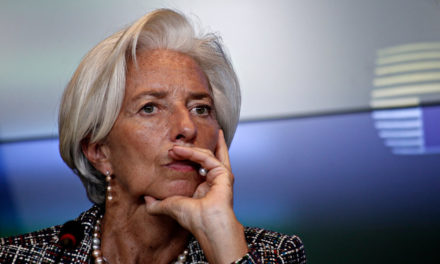There has been a lot of criticism over President Donald Trump’s latest nominee to the Fed board, Stephen Moore.
But when it comes to anything Trump does, what else is new?
But not everyone is a critic of the move. Fox Business opinion writer Thomas Del Beccaro says the appointment of Moore is a “glasnost” moment for one of America’s most secretive institutions, referring to the Soviet Union’s break with the past in favor of open discussion of policy and social issues under Mikhail Gorbachev.
Per Fox Business:
Moore’s nomination is not without controversy. There are those who don’t want a critic on the Fed board. That is the insular thinking that Moore’s candidacy is meant to defeat. There is also negative reporting on his personal life and a dispute he has with the IRS – two not uncommon circumstances in today’s world.
Do you know how many Fed governors there are? Or how many vacancies? Or their “governing” philosophy?
If you don’t know the answers to those questions, you are not alone. The Fed is hardly the most public of institutions. As for the answers: currently there are five serving on the board. Moore would fill one of two vacancies.
As for their governing philosophy – that is all too certain as well, and not in a good way.
As John Tamny, economic advisor and director of the Center for Economic Freedom at FreedomWorks, wrote recently in Forbes, the Fed board members have a “near monolithic view . . . who think too many people working and producing is the cause of inflation,” i.e. they believe in the Phillips Curve and govern by it. In other words, they literally believe that if the economy is doing too well, inflation is sure to occur.
They also view their job is to manage (read: control) the upside and the downside of the economy. Consider this recent statement from Federal Reserve Bank of New York President John Williams:
“Any development in the economy, whether it’s on the employment side or on the inflation side, that moved in a persistent way away from our objectives, one way or the other, would be a reason to rethink the path of policy going forward,” Williams said.
Talk about control freaks.
Yet, the question must be asked: Is the Phillips Curve settled science?
Tamny says no. Better yet, he ridicules the very notion that economic growth causes inflation. In truth, growth is the biggest driver of falling prices, because it springs from the very investment that pushes down the price of most everything.
More importantly, Moore says no — and Tamny and Moore have considerable history on their side.
Moore’s view is that the private sector should be the engine of the economy. He also believes that, if economic growth is driven by investment and the private demand that follows increases in supply, that dynamic is logically not inflationary — it most correlates with falling prices.
Consider the massive growth in the U.S. economy in the late 1800s.
Prior to the Federal Reserve’s existence (it was created in 1913), the economy grew, by some estimates, over 400 percent during that period of time. According to the St. Louis Fed, however, the U.S. was not plagued by inflation.
This data does not support a monolithic view that the Phillips Curve is settled science. To the contrary, things were better before the Fed was created.
It is also interesting to note that Federal law requires the president, when making appointments to the Fed board, to give “due regard to a fair representation of the financial, agricultural, industrial, and commercial interests, and geographical divisions of the country.”
Presumably, the purpose of that requirement is to have a diversity of experience and views on the board of governors. We know, however, that is not currently the modus operandi for the Fed.
Moore believes that current Federal Reserve policy of raising interest rates is a threat to growth. Of course, far more practiced minds than mine may well argue the opposite. More to my point, the Federal Reserve should have an open discussion on all of the issues that come before it.
For these reasons, Moore should be confirmed.




